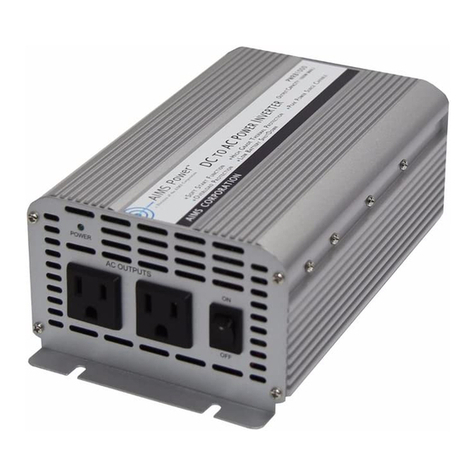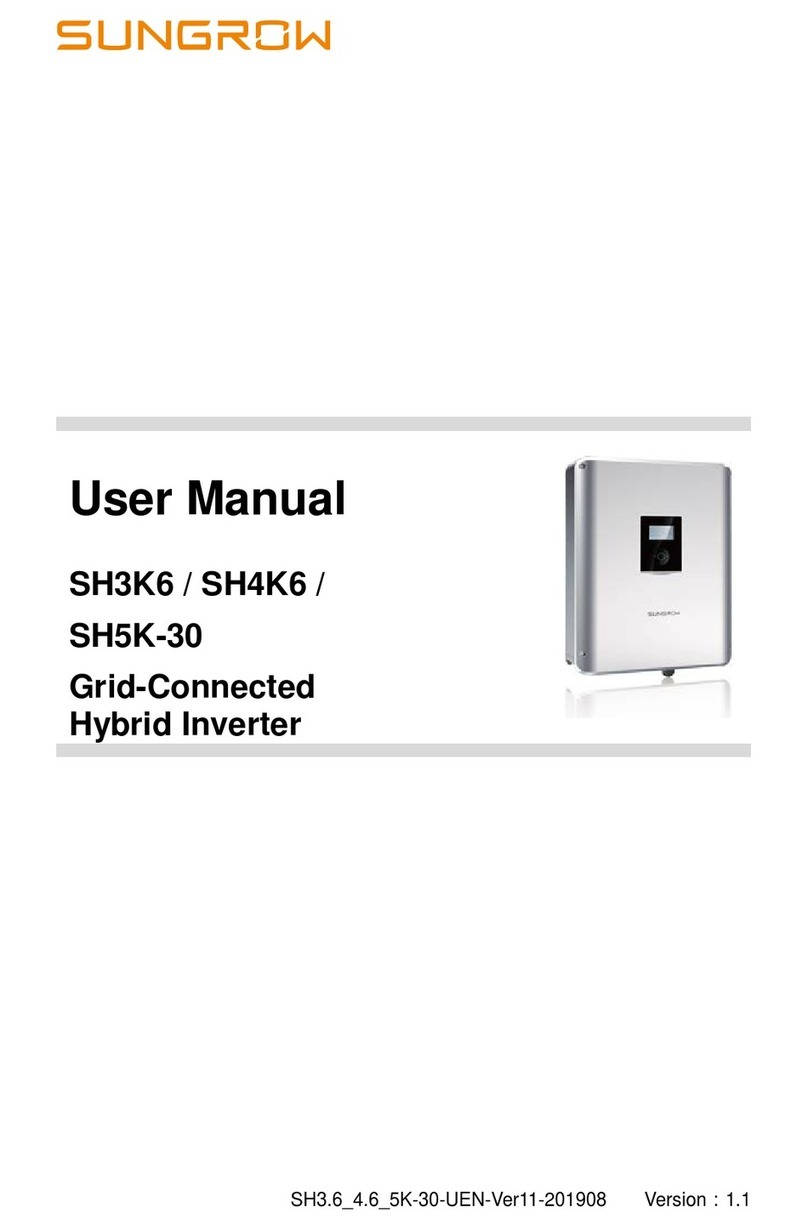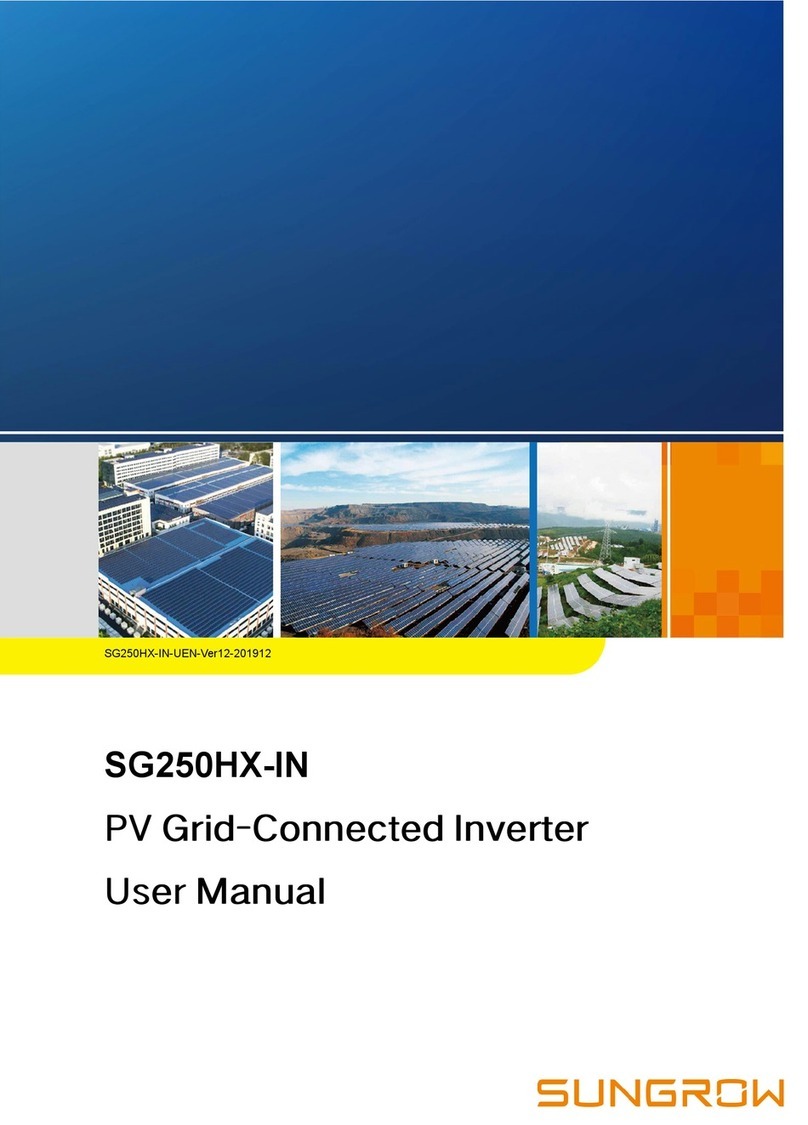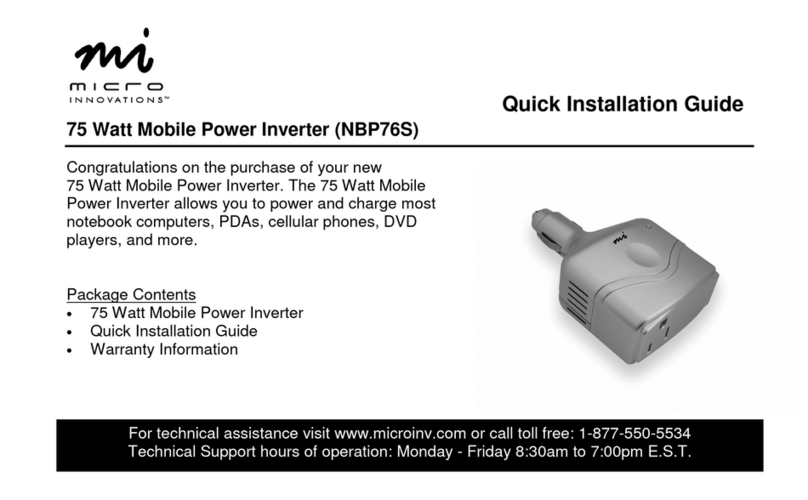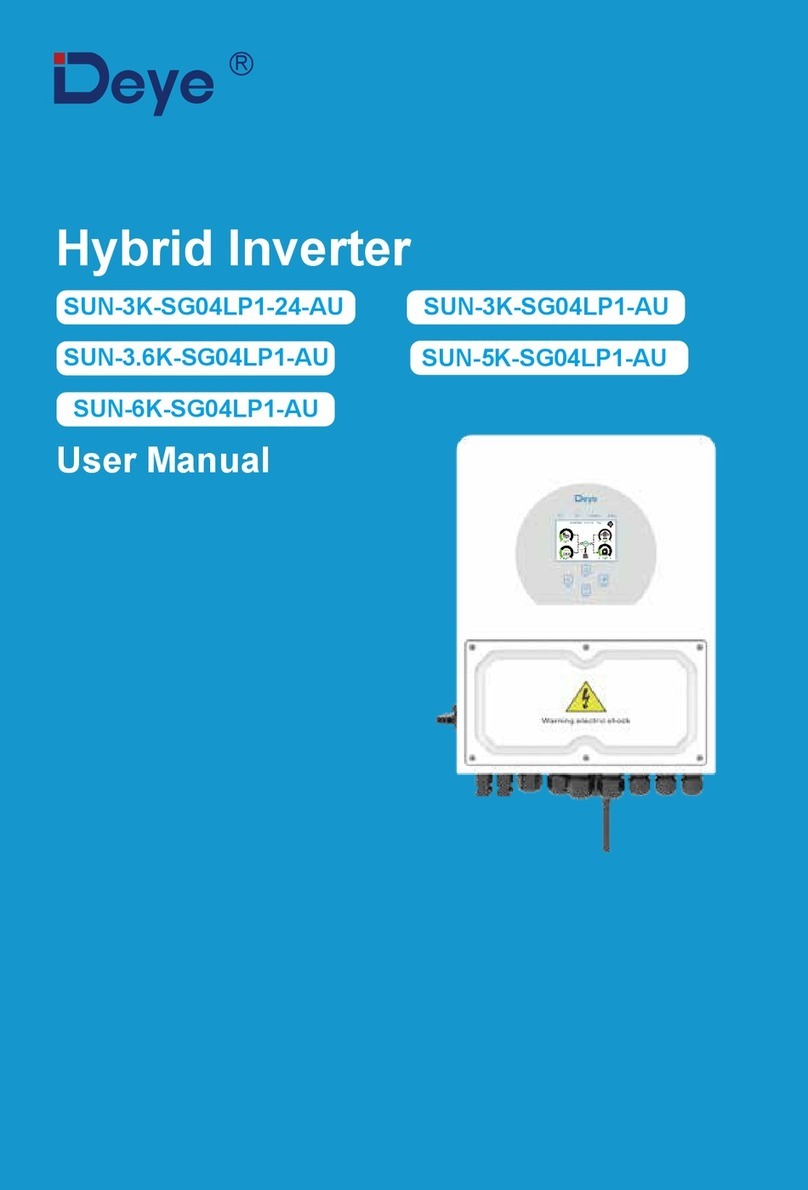PSC XANTRA VV ADVANCED User manual

SPECIFICATION OF PV CHARGE CONTROLLER
Solar Charge Controller
Installation and operating instructions
Version: 1.0
(2017.9)
www.pscsolaruk.com
info@pscsolaruk.com
Phone Number: +2348120855444,
+2348123655444
Users:
Thank you very much for selecting our Solar Charge Controller!
This manual contains important information and suggestion about
installation, operation and trouble shooting. Please read them carefully
before you use it
XANTRA VV ADVANCED 12V-48V/Auto 60A PWM SOLAR CHARGE
CONTROLLER
PSC INDUSTRIES LIMITED
Physical Office: 41B, Olutoye Cres/Adeniyi Jones, Ikeja, Lagos State, Nigeria

SPECIFICATION OF PV CHARGE CONTROLLER
Content
1. SAFETY INSTRUCTIONS ....................................................................1
1.1SAFETY INSTRUCTIONS ARE IDENTIFIED AS FOLLOWS............................1
1.2SAFETY PRECAUTIONS ..........................................................................1
1.3AFTER-SALE SERVICE ............................................................................2
1.4EXCLUSION OF LIABILITY......................................................................2
2.PRODUCT INFORMATION ..................................................................2
2.1PERFORMANCE FEATURE .......................................................................3
3.INSTALLATION INSTRUCTION .........................................................4
3.1PRECAUTIONS........................................................................................4
3.2WIRING INSTRUCTION ...........................................................................5
3.3MOUNTING............................................................................................5
3.4WIRING THE CONTROLLER TO THE SYSTEM............................................5
4.OPERATION ............................................................................................6
4.1INSTRUCTION OF HMI INTERFACE .........................................................6
4.2THE INSTRUCTION OF THE LCD DISPLAY...............................................7
4.3INSTRUCTION OF SUBMENU ...................................................................8
4.4INSTRUCTION OF SETTING PARAMETER..................................................9
5.INSTRUCTION OF PWM TECHNOLOGY.......................................11
5.1WHAT IS PWM CHARGING MODEL.......................................................11
5.2BULK CHARGING STAGE ......................................................................12
5.3EQUALIZE CHARGING STAGE ...............................................................12
5.4FLOAT CHARGING STAGE .....................................................................12
6.TROUBLESHOOTING & MAINTENANCE .....................................13
6.1TROUBLESHOOTING.............................................................................13
6.2MAINTENANCE....................................................................................13
7.MODEL INSTRUCTION ......................................................................14
8.TECHNICAL SPECIFICATION..........................................................14

SPECIFICATION OF PV CHARGE CONTROLLER
1
1. Safety Instructions
1.1 Safety instructions are identified as follows
WARNING: This symbol indicates potentially dangerous
condition. Users should pay extreme caution when performing
this task.
CAUTION: This symbol indicates critical procedure for safe
and proper operation of the controller
NOTE: This symbol indicates the procedure or function that is
important for safe and proper operation of the controller.
1.2 Safety Precautions
1.2.1 Read all the instructions and cautions in the manual
before installation.
1.2.2 There are no serviceable parts inside the controller, so do
not disassemble or attempt to repair it without authority
from manufacturer.
1.2.3 Please avoid direct sunlight if you install it outdoor.
1.2.4 Install external fuses/breakers as required.
1.2.5 Install the controller in well ventilated places, the
controller heatsink may become very hot during
operation.
1.2.6 Keep the controller away from water, electrical heater and
avoid the controller from direct sunlight.
1.2.7 Disconnect PV arrays and battery before install or adjust
the controller.
1.2.8 Power connections must remain tight to avoid excessive
heating from loose connection.
1.2.9 Be sure to always keep children away from the system.
1.2.10Do not use measurement equipment you know to be
damaged or defective.
1.2.11Avoid the generation of sparks and wear eye protection
during installation.
1.2.12The manual must also be available to third parties for all

SPECIFICATION OF PV CHARGE CONTROLLER
2
work performed on the system.
1.3 After-sale service
The controller has two years of warranty since the manufacture
date. Please operate the controller following the manual strictly.
If there are some problems happen, please contact us directly for
professional suggestions, if the problems still can’t be solved,
then send it back to us with freight prepaid, and provide related
information about the controller, such as invoice, S/N code and
details description of the faults. The information will help us to
make a fast repair. We also need to know the information of
solar panels, batteries and loads which are important to us
finding the reasons and solve the problems.
1.4 Exclusion of Liability
The manufacturer cannot monitor the compliance to this manual,
nor the conditions and methods of installation, operation, usage
and maintenance of the system controller. Improper installation
of the system may result in damage to property and, as a result,
to bodily injury. Therefore, we assume no responsibility or
liability for loss, damage or costs which result from, or are in
any way related to, incorrect installation, improper operation, or
incorrect use and maintenance. Similarly, we assume no
responsibility for patent right or other right infringements of
third parties caused by usage of this system controller. The
manufacturer reserves the right to make changes to the product,
technical data or assembly and operating instructions without
prior notice.
NOTE: Opening, manipulating or attempting to repair the
device or operating the device in an improper manner will
invalidate all legal guarantee claims.
2. Product Information
The YO POWER solar charge controller adopts advanced digital
control technology, 3’’ LCD display, touching keys and

SPECIFICATION OF PV CHARGE CONTROLLER
3
automatically operation. With the features of PWM (Pulse Width
Modulation) battery charging and unique control technology, the PV
charge controller improves battery life efficiently. The PV charge
controller is only suitable for controlling solar modules. Never
connect any other types of charging source to the controller. This
can destroy the controller and/or the charging source permanently.
CAUTION: The controller is only suitable for indoor use or well
waterproof environment. It must be installed in a manner providing
protection from weathering influences such as rain and direct
sunlight. Ventilation openings must not be covered. The controller
may only be used for the specified intended purpose. Please also
ensure that the permissible model-specific rated currents and
voltages are not exceeded. No liability is accepted when the device
is used in a manner other than for the intended purpose. Handle the
product with care.
2.1 Performance feature
➢Industrial-grade chips ensure stable performance.
➢Excellent EMC design
➢PWM technology has three charging stages (buck charging,
equalize charging and float charging) which improves the
charging efficiency and battery storage capability.
➢Advanced battery activation technology which increases
battery lifetime 30% at least and improves the system
performance
➢It adopts imported MOSFET as electronic switch which
can improve the stable performance of controller.
➢3’’ LCD displays the system status and working parameters
➢Parameters setting flexibly by touching keys
➢Users can parallel connect lots of t controllers in a system
➢DC output function
➢2 USB outputs
➢Standard Modbus protocol for RS-485 or GPRS

SPECIFICATION OF PV CHARGE CONTROLLER
4
communication to extend the communication distance
(optional function)
➢New SOC method indicates the power generation
information of daily, monthly and total.
➢The temperature compensation function compensates the
voltage based on different temperature.
➢It adopts graphical dot-matrix 3’’ LCD and 4 touching
buttons as HMI for full menu and easy operation
➢RTC function indicates the real time and temperature.
3. Installation Instruction
3.1 Precautions
Warning: do not install it with open type lead-acid battery in a
confined space, also do not install it in a sealed place where
battery gas may be assembled. These will cause explosion.
Warning: If the positive and negative of battery is short circuit,
there will be explosion or fire, so be careful about it.
Warning: The PV arrays may produce a high voltage which will
shock to people, it’s very dangerous, so be careful about it when
you install the system.
Caution: When you wire the solar controller, please ensure there
is enough air through the heat sink of controller, we suggest
200mm space at each up and down.
Caution: Please ensure all battery and PV arrays are turn off
when you install the solar system. We suggest users to install a
break between PV arrays and controller, also same between
battery and controller.
Caution: our solar controller is equipped with corresponding
cold pressing terminal for different current. Please tightly press
it with wire. Loose connection will gather heat which is very
dangerous. Please also ensure there is no any fur between the
wire and cold pressing terminal.
Caution: Please use insulated tools and avoid placing metal

SPECIFICATION OF PV CHARGE CONTROLLER
5
objects near the battery.
Note: By default, the controller works with Lead-acid battery,
GEL battery, AMG battery, etc. If you use Lithium battery,
please let me know before you buy it. We have special program
for lithium battery. We will do not take any responsibility for
problems when you use the controller with lithium battery.
Note: We suggest 10mm2copper wire for wiring in the system.
3.2 Wiring instruction
From left to right of the connection terminal which in turn is
solar panel positive pole, solar panel negative pole, battery
positive pole, battery negative pole, DC output positive pole and
DC output negative pole, the diagram as following:
Solar Panel
Battery
Load
S+
S-
B+
B-
L+
L1
3.3 Mounting
3.3.1 Choose mounting location
Mount the controller near to battery and on a safe
surface protected from direct sunlight, high temperature
and water, a best surface should with following
properties
*Stable * Ventilation * Non-flammable * Dry
Do no install the controller outside. The controller must
be mounted protected from moisture, dripping water,
spray, rainwater and direct or indirect heating, e.g. from
direct sunlight.
3.4 Wiring the controller to the system
3.4.1 Connect battery to the controller
Note: Right connect the positive and negative.
Warning: Risk of explosion or fire! Never short circuit
battery positive (+) and negative (-) or cables.
3.4.2 Connect solar panel to the controller

SPECIFICATION OF PV CHARGE CONTROLLER
6
After normal display of the LCD, then connect solar
panel to the solar controller
Note: Right connect the positive and negative
Caution: If there is no combiner in the system, we
require user to add a breaker between the controller and
PV arrays. And before you connect them, please ensure
that the breaker is off.
Warning: Risk of electric shock! The solar module’s
high voltage output can cause severe shock or injury.
Be careful operation when installing solar wiring.
3.4.3 Connect loads to the controller
NOTE: Right connect the positive and negative
3.4.4 Confirm the wiring
Double check the all the wiring steps above. Confirm
all connections are right and tightened. Then do the
next step.
3.4.5 Caution: If you want to remove the system, please follow
the following steps strictly:
➢Turn off the combiner or breaker between solar
module(s) and controller, then remove the solar
module(s) from controller first!
➢Second move the battery
➢Last move the load
4. Operation
4.1 Instruction of HMI interface
D E F
A
B
C
G H

SPECIFICATION OF PV CHARGE CONTROLLER
7
A: Fault indicating lamp
B: Charging indicating lamp
C: DC output indicating lamp
D: The main display area
E: Menu or return
F: Move up or value increase
G: Move down or value decrease
H: Confirm or enter to submenu
4.2 The instruction of the LCD display
After you right connect battery to the solar controller, the LCD
will display the following main screen (Menu 1)
4.2.1 The first line from left to right, which in turn is
equipment ID, ambient temperature and total days the
equipment runs
4.2.2 The second line from left to right, which in turn is solar
panel voltage, battery voltage and the DC output
current
4.2.3 The third line from left to right, which in turn is charging
current, battery state and DC output state
➢There are 7 battery states
QU.Chr: fast charging
EQ. Chr: Equalize charging
FL.Chr: Float charging
BattUV: under-voltage
BattOV: over-voltage

SPECIFICATION OF PV CHARGE CONTROLLER
8
ChrgOC: Over current of charging
NoChrg: no charging
➢There are 2 DC output states
Norma: the DC output is normal
LoadOC: over current of discharging
4.2.4 The last line from left to right, which in turn is the real
time and date
4.3 Instruction of submenu
4.3.1 In the main screen, press menu key, it will enter to the
following interface (Submenu 1)
➢Monitoring:
➢2. Device Set
➢3. Parameter Set
➢4. Load Set
➢5. Rated Value
➢6. Password Set
➢7. Reboot Device
➢8. Factory Reset
4.3.2 In the main screen, press “-“ key, it will enter to the
following interface (Submenu 2)

SPECIFICATION OF PV CHARGE CONTROLLER
9
4.3.3 In the main screen, press confirm key to control the DC
output or not.
4.4 Instruction of setting parameter
Any parameters in the next menus can be adjusted by users
according to different requirement of battery, and all adjustment
need password to confirm the change. The factory password is
1234.
4.4.1 Device Set
In the submenu 1 interface, when the cursor in the “2.
Device Set” position, press confirm key to the
following interface
Users can set the Equipment ID, Date and Real time
4.4.2 Parameter Set
In the submenu 1 interface, when the cursor in the “3.
Parameter Set” position, press the confirm key to the
following interface
➢OV.Disc: Over charge, if battery real voltage high
than this value, the controller will stop charging.
➢Ov_Rect: Over charge reconnect, when battery real

SPECIFICATION OF PV CHARGE CONTROLLER
10
voltage recovery to this value from over charge,
the controller will recharge the battery.
➢EQ_Chrg: Equalize charging, when battery real
voltage is increased to this value, the controller
will enter to equalize charging stage which
continue 120 minutes.
➢FL_Chrg: Float charging, after 120 minutes of
Equalize charging, it will enter to float charging
stage.
➢UV_Disc: Under voltage, if battery real voltage low
than this value, the controller will stop giving DC
output.
➢UV_Rect: Under voltage recovery, when battery real
voltage recovery to this value from under voltage,
the controller will give DC output again.
➢EQ_Time: Equalize charging time.
4.4.3 Load Set
In the submenu 1 interface, when the cursor in the “4.
Load Set” position, press confirm key to the following
interface
If the load state is OFF, there is no output. If the load
state is ON, there is output, users can set the output
time, this is suitable for streetlight model.
4.4.4 Password Set
In the submenu 1 interface, when the cursor in the “6.

SPECIFICATION OF PV CHARGE CONTROLLER
11
Password Set” position, press the confirm key to the
following interface
If you set this the first time, the old password is 1234.
If you change the password to a new password, please
use the new password to confirm all adjustment.
4.4.5 Reboot Device
In the submenu 1 interface, when the cursor in the “7.
Reboot Device” position, press the confirm key to the
following interface
4.4.6 Factory Reset
In the submenu 1 interface, when the cursor in the “8.
Factory Reset” position, press the confirm key to the
following interface
If user chooses the factory set, all data will be cleared.
Use this option carefully.
5. Instruction of PWM technology
5.1 What is PWM charging model
Pulse Width Modulation (PWM) is the most effective means to
achieve constant voltage battery charging by switching the solar
system controller’s power devices. When in PWM regulation,
the current from the solar array tapers according to the battery’s

SPECIFICATION OF PV CHARGE CONTROLLER
12
condition and recharging needs. The battery can be fully
charged safety and rapidly with pulse current. Pulse current
charging model makes battery having more time to react which
reduces the gassing volume and makes battery improving the
acceptance rate of charging current.
5.2 Bulk charging stage
In this stage, 100% of available solar power is used to charge
battery(s). Every time after the controller is rebooted, if it
detects the system voltage low than equalize charging point, it
will enter to bulk charging stage automatically.
5.3 Equalize charging stage
The controller will enter to equalize charging stage and keep a
constant-current charging battery(s) since the system voltage
reach to equalize charging point. Constant-current regulation is
used to prevent heating and excessive battery gassing. As to
factory default setting, the equalize charging stage will remain
120 minutes and then enter to Float charging stage.
5.4 Float charging stage
It will enter to float charging stage after the Equalize charging
stage is done. In this stage, it will use a smaller voltage and
current charging battery slightly. The purpose of Float charging
stage is to offset the power consumption cause by itself and
other equipment in the system, while maintaining full battery
storage capacity. Load(s) can continue draw power from battery
in float charging stage, even that the system load(s) exceed
charging current, the controller will no longer be able to
maintain the battery at the Float charging stage, it will return to
Bulk charging stage once battery bank system voltage below
than equalize charging point. The battery charging information
as follow:

SPECIFICATION OF PV CHARGE CONTROLLER
13
6. Troubleshooting & Maintenance
6.1 Troubleshooting
The trouble phenomenon and solutions please refer to the
table-1 and table-2 in the last.
6.2 Maintenance
The following inspections and maintenance tasks are
recommended at least two times per year for best performance.
➢Check the air flow and ventilation around the controller is
not blocked. Clear all dirt or fragments around the exit fan.
➢Check all the naked wires to make sure insulation is not
damaged for serious sunshine, frictional wear, dryness,
insects or rats etc. Maintain or replace the wires if
necessary.
➢Check if LCD display. Pay attention to any troubleshooting
or error indication. Take corrective action if necessary.
➢Tighten all the terminals. Inspect for loose, broken, or
burnt wire connections. Confirm that all the terminals have
no corrosion, insulation damaged, high temperature or
burnt/discolored sign.
➢Check and confirm that lightning arrester is in good
condition. Replace a new one in time if necessary.
WARNING: Risk of electric shock! Please turn off all the
power when you do these.

SPECIFICATION OF PV CHARGE CONTROLLER
14
7. Model Instruction
YQ PV - LP ***/***
Yo Power
PV System
Low Power System
Rated System Voltage
Rated Charging Current
8. Technical Specification
Electrical Parameter
Rated system voltage
12V/24V/48V, auto detect
Max. input voltage
100V
Rated charging current
30A/40A/50A/60A
No. of input
1 group
No-load loss
<0.5W
Equalize voltage
14.4V/28.8V/57.6V
Adjustable
Equalize recovery voltage
13.2V/26.4V/52.8V
Equalize charging time
120 Minutes
Float voltage
13.8V/27.6V/55.2V
Under voltage disconnect
10.5V/21V/42V
Under voltage reconnect
12.6V/25.2V/50.4V
Over voltage disconnect
16V/32V/64V
Over voltage reconnect
15V/30V/60V
Environment Parameter
Display
3’’ LCD (White backlight)
Display language
English
Indicator light
Error indicator/Charging indicator
Terminal type
TC Series barrier terminal
Humidity
0~98%, non-condensing

SPECIFICATION OF PV CHARGE CONTROLLER
15
TABLE-1
Indicator
Fault
Possible reason
Troubleshooting
OV-Volt
Battery over
charge
There are other equipment
charging battery and make the
system voltage unstable
Turn off the PV module(s) and check
the real battery voltage
UV-Volt
Battery over
discharge
The consumption power is high
than charging power
Shut down loads or check if the under
voltage of inverter is too low
OV-Curr
Charging current
is too large
The real charging current is
more than 1.1 times than rated
system voltage
Check if the solar power is high than
the Max. solar power which controller
demands
OV-Temp
High temperature
The heat sink’s temperature is
very high
The controller will stop charging since
the heat sink’s temperature high than
750C automatically and recovery since
the temperature below than 650C
NC-IGBT
Power module
error
IGBT is down
This error couldn’t be repaired, please
turn off battery and PV arrays, and
contact us immediately.
TABLE-2
Environment temperature
-25°C +55°C
Elevation
≤4000M, should reduce power if the
elevation high than 4000M
Protection level
IP32
Noise
<30dBA
Dimension
183.4*153.4*53.5mm
Weight
2.5 KG
Package information
Hard box with pearl sponge

SPECIFICATION OF PV CHARGE CONTROLLER
16
Fault Possible reason Troubleshooting
It doesn’t work when you first
install it
Battery voltage is too low
Battery reverse connection
Change battery or charging battery by
other equipment
Please adjust the connection
The controller doesn’t charge
when sun light on PV modules The PV modules short circle. Check if the connections of PV
modules is right and tightened.
Small charging current The sunshine is not good
Battery is close to full charge
Wait for good sunshine
It’s normal
Any Changes without prior notice!
PSC INDUSTRIES LIMITED
www.pscsolaruk.com
info@pscsolaruk.com
Phone Number: +2348120855444,
+2348123655444
Physical Office: 41B, Olutoye Cres/Adeniyi Jones, Ikeja, Lagos State, Nigeria
Table of contents
Popular Inverter manuals by other brands

DASS Tech
DASS Tech saleaf DSP-3315i-ODS Manual for use and installation
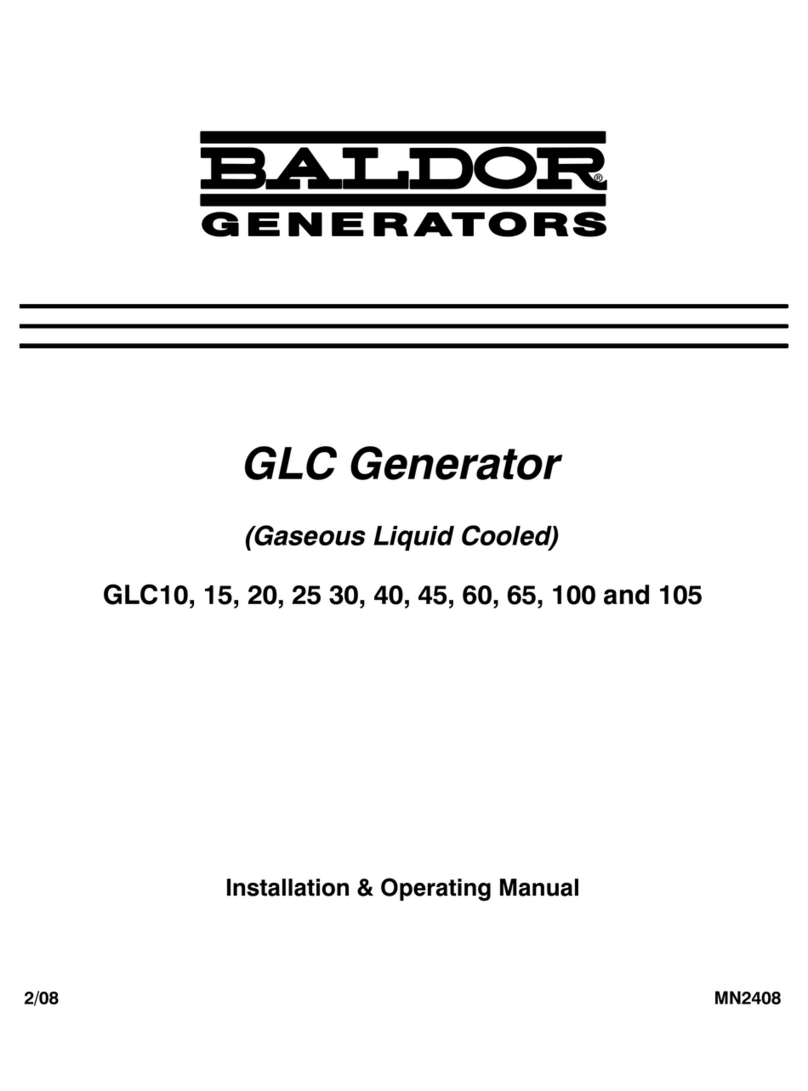
Baldor
Baldor GLC10 Installation & operating manual
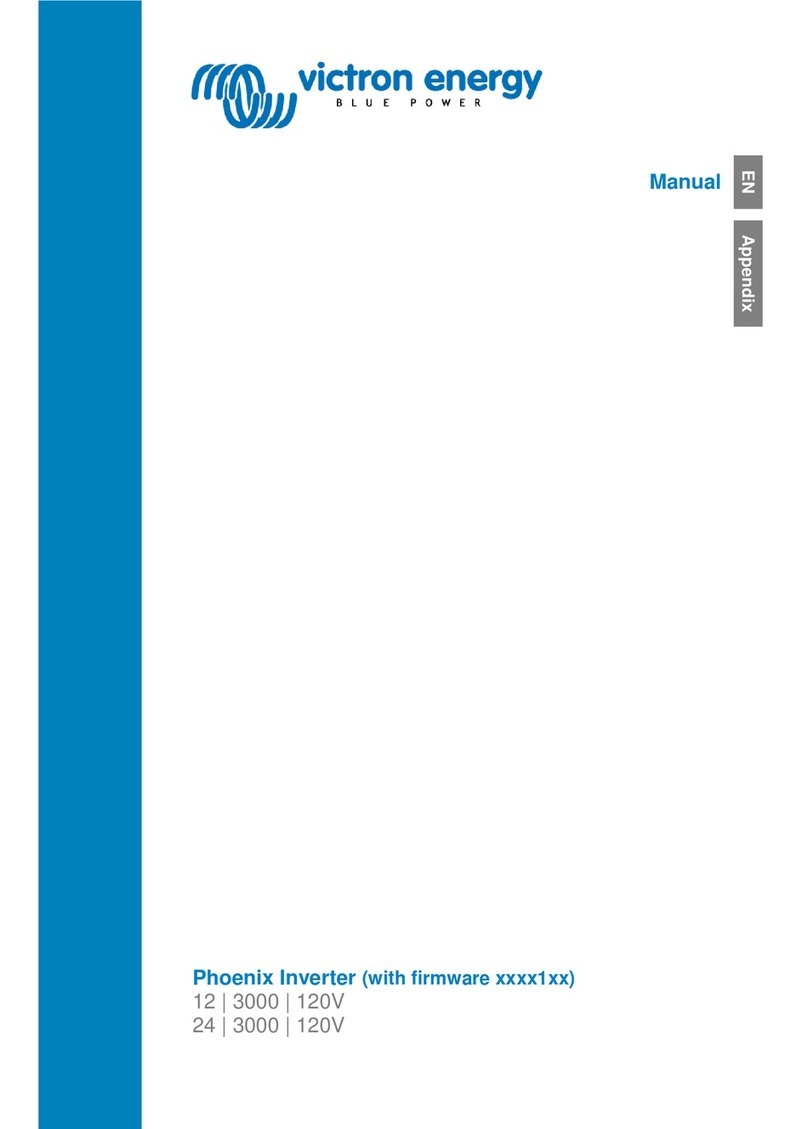
Victron energy
Victron energy 12 120V manual

Kemot
Kemot PROsolar-1800 owner's manual

Watt Drive
Watt Drive V3000-015LF manual
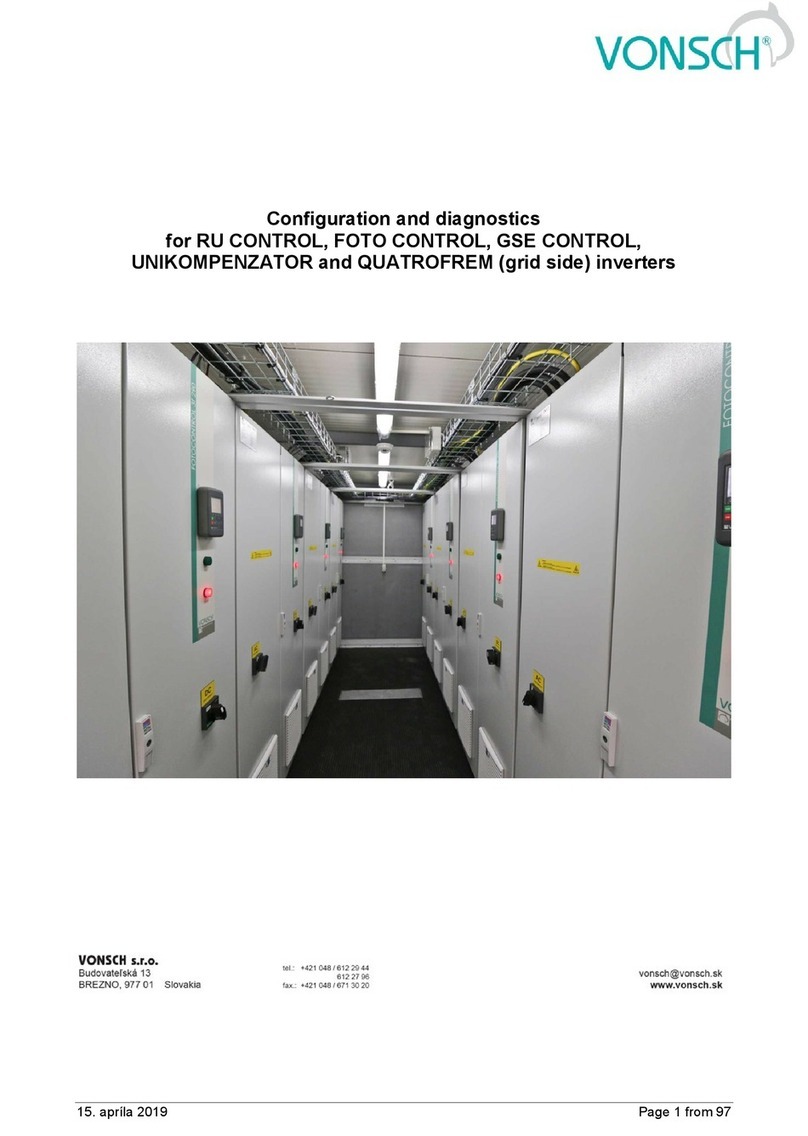
Vonsch
Vonsch RU CONTROL Series Configuration and Diagnostics
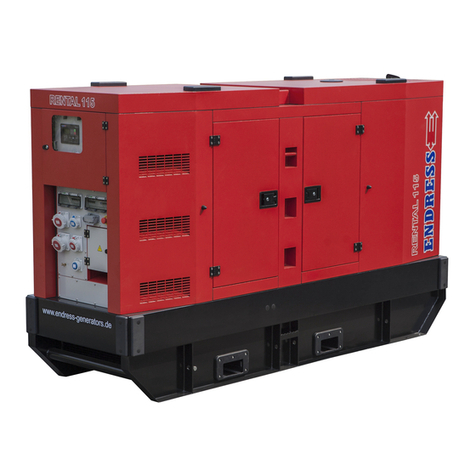
Endress
Endress ESE Series Translation of the original operating manual

Ingeteam
Ingeteam INGECON SUN STORAGE 1Play 3 Installation and operation manual
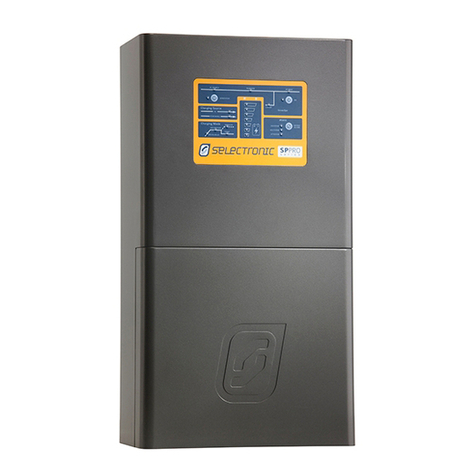
Selectronic
Selectronic SP PRO Installation notes
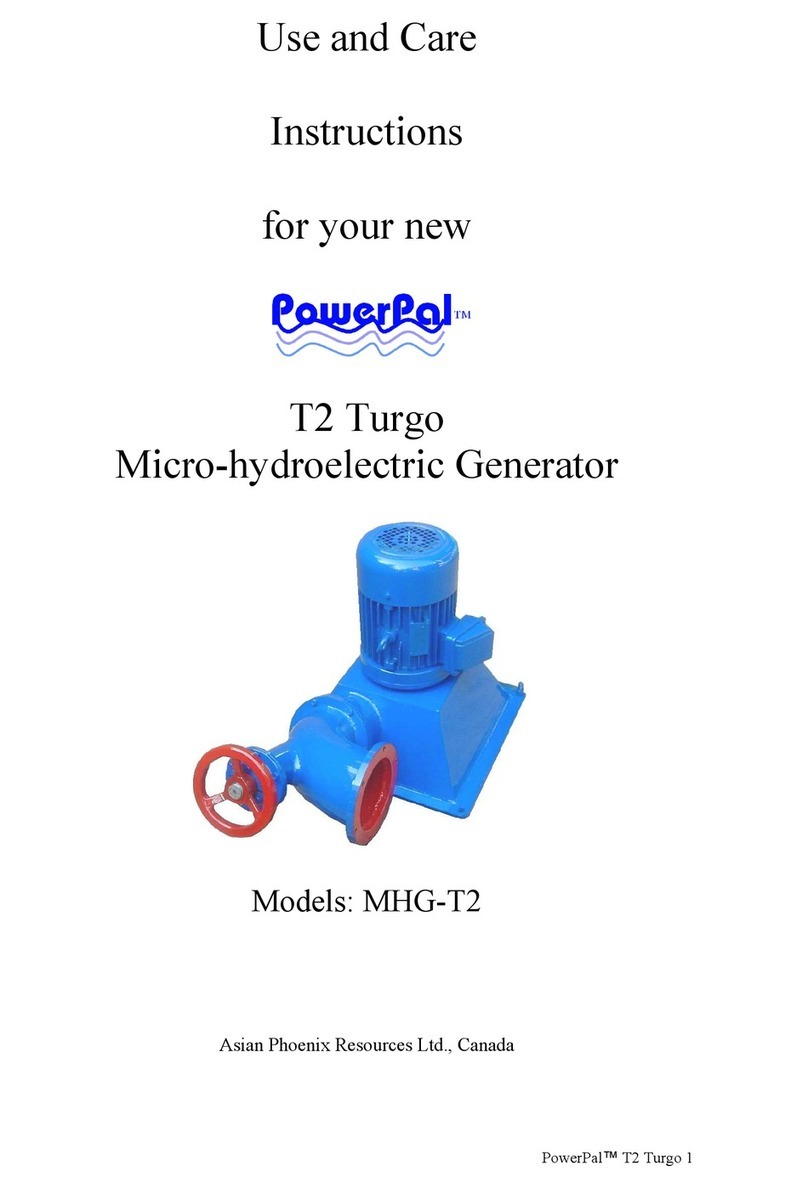
Asian Resources Int'l Limited
Asian Resources Int'l Limited MHG-T2 Use and care instructions
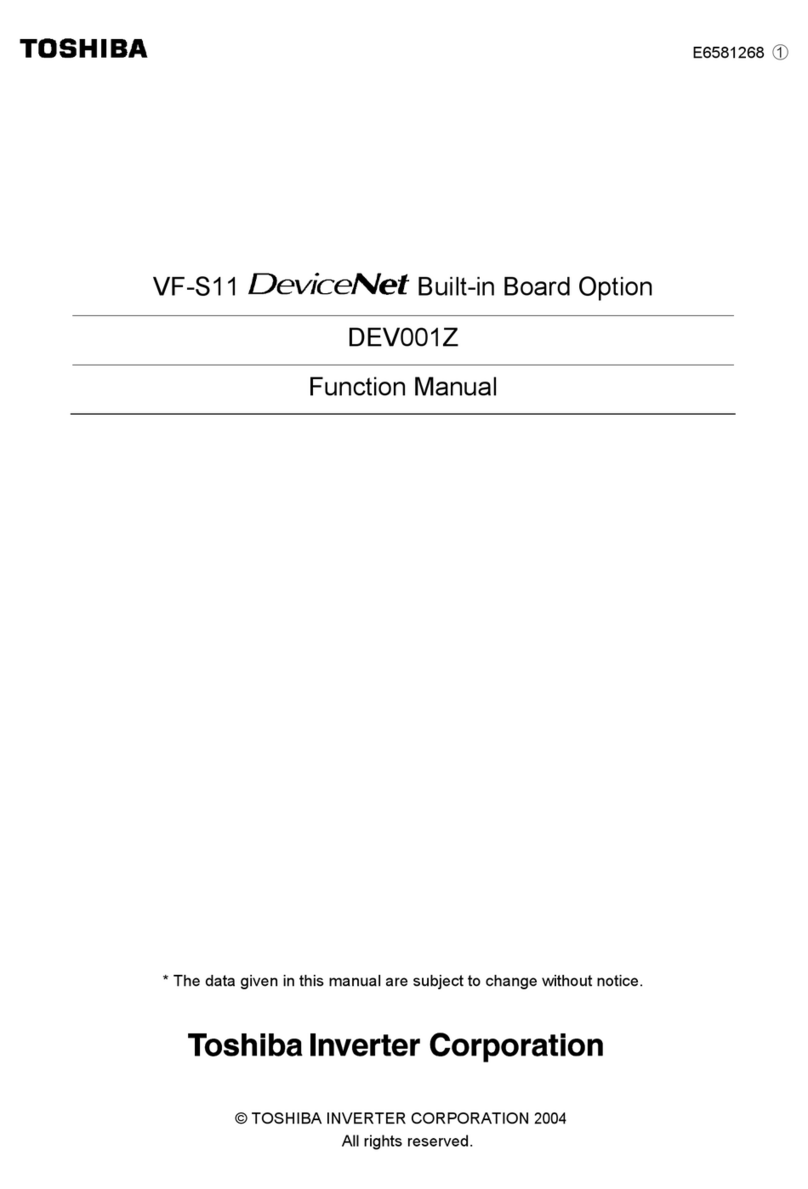
Toshiba
Toshiba DEV001Z Function manual
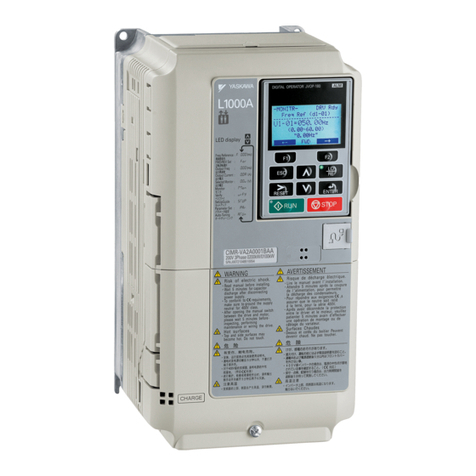
YASKAWA
YASKAWA L1000A Series Technical manual
